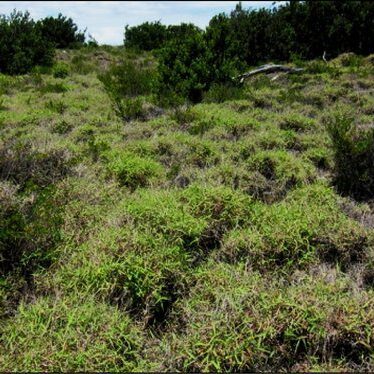After fire, it is important to understand that people and lives come first, that soil and environmental stabilization comes next, and that short-term and long-term support of fire resilient landscapes is critical to a successful recovery. As the platform for fire science exchange across Pacific Islands, PFX's current expertise is the science around pre-fire planning, vegetative fire fuels reduction with an aim to reduce wildfire risk across the landscape.
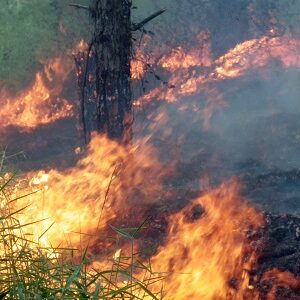
After fire, first things first.
In the aftermath of evacuation and recovery, communities and responders are often dealing with hazardous environmental conditions which call for vigillant public safety and environmental stabilization.
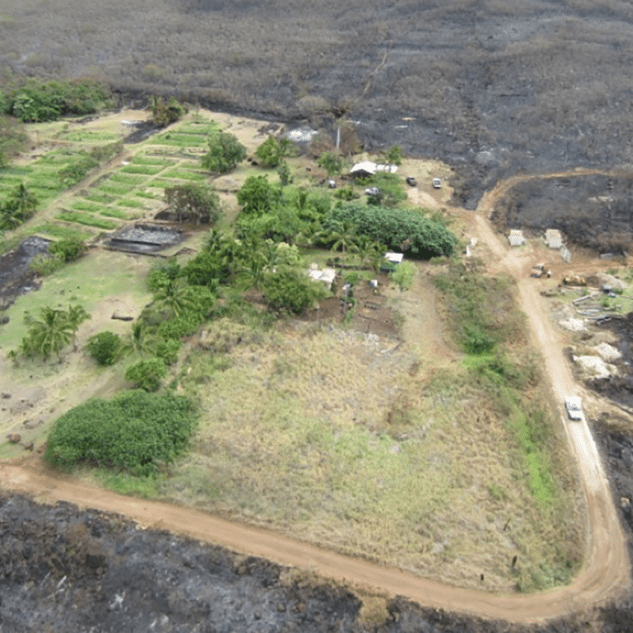
For long-term wildfire risk mitigation planning, supporting agriculture and reducing fuels around your home and community are key.
The role that farms and ranches play in land care is critical across fire prone landscapes. Ranches and farms keep fire-prone weeds at bay to maintain pastures and crops.
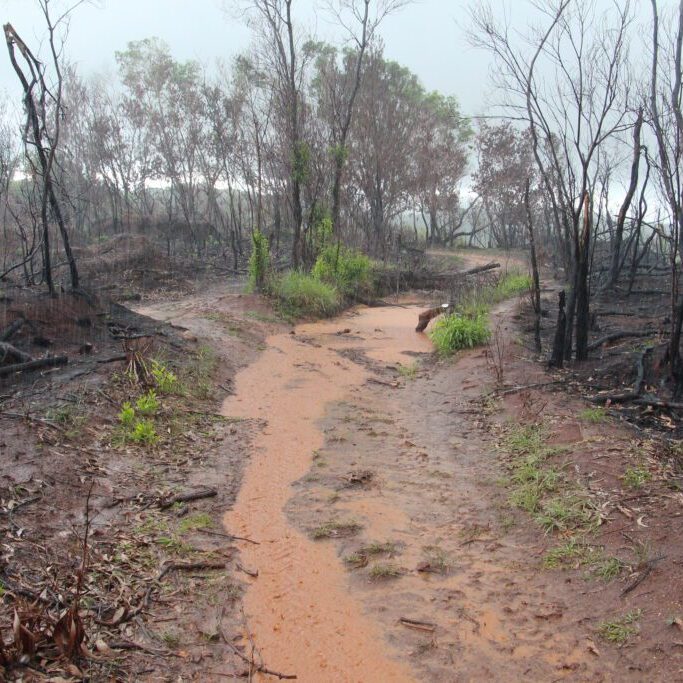
What is your emergency soil stabilization plan? This can be done in various high-tech and low-tech ways.
After human health and safety, the first priority is to protect the soils from rain and run-off.

Consider re-vegetating burned areas in a way that makes sense for your environment while knowing that resources (time, money, long-term stewardship) may vary.
Re-planting is an important, long-term strategy for soil stabilization. While native Hawaiian plants are always desirable, they require a great deal of care, such as water, fencing and weeding.
Other After Fire Resources
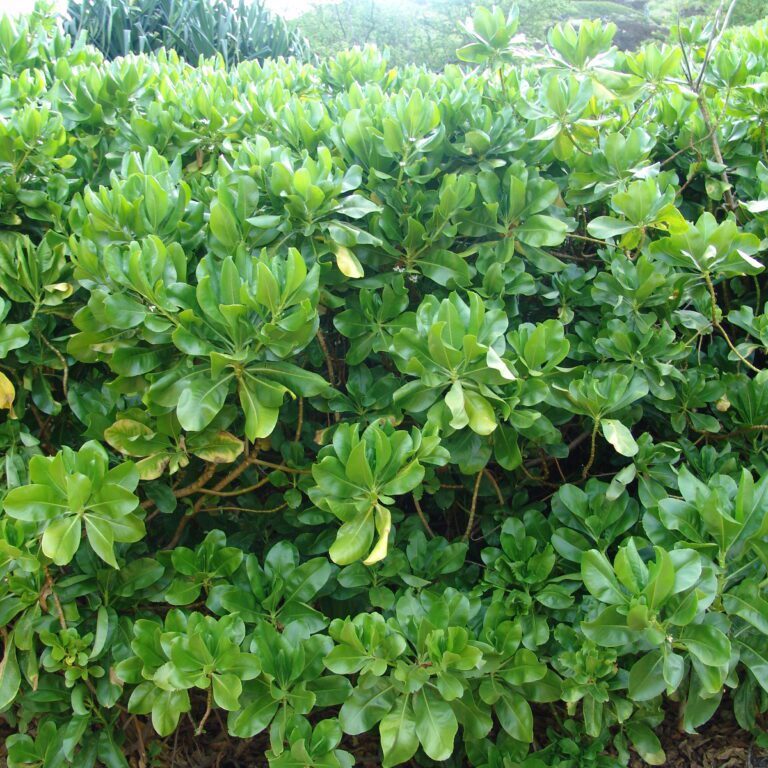
Coastal Plants for Creating Green Breaks
Summary results of 30 plants recommended by experts for planting in Hawai`i from sea level to 2,000 ft elevation (2023 survey results)
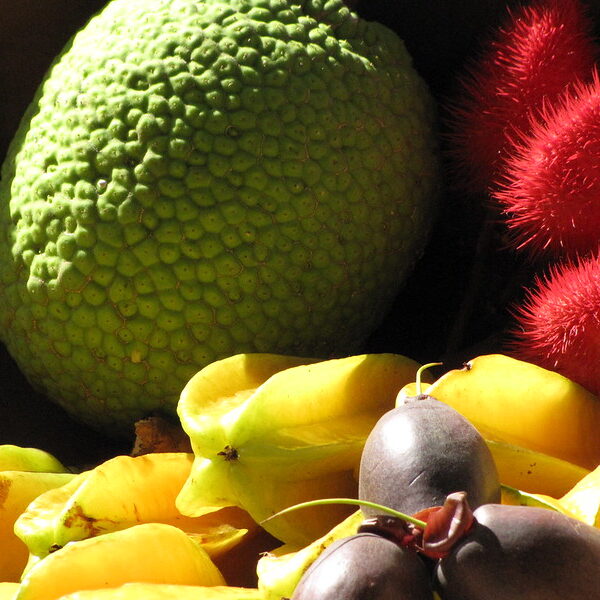
Survey Results: Species List of 30 Coastal Plants for Creating Green Breaks
Species list of 30 plants recommended by experts for planting in Hawai`i from sea level to 2,000 ft elevation (2023 survey results)
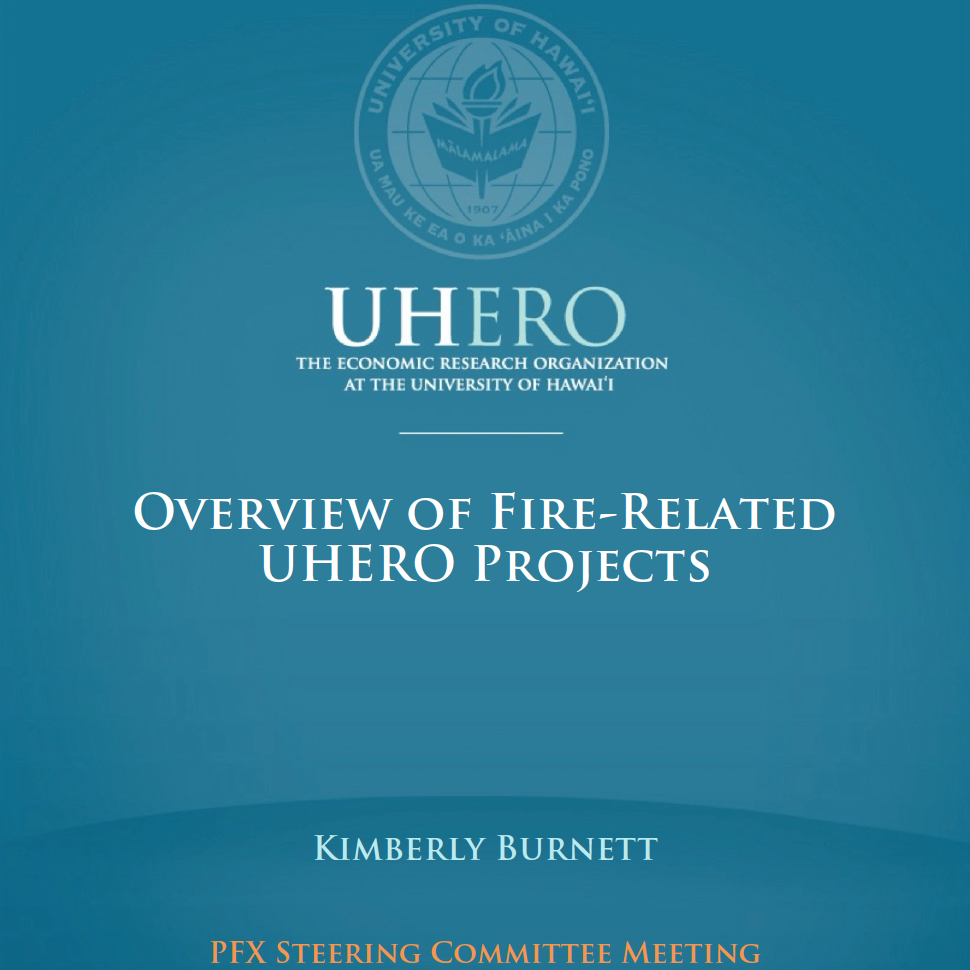
Presentation: Overview of University of Hawai‘i Economic Research Organization fire projects
Dr. Kim Burnett, Assistant Director of the University of Hawai`i Economic Research Organization presents some of her economic analysis of Hawaiian dry forest restoration as well as wildfire-related work in the aftermath of the August 2023 Maui fires.
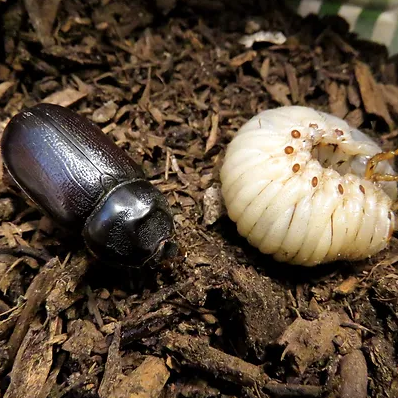
When re-vegetating, reduce the spread of invasive species.
When re-planting, limit the spread of invasive pests by following these guidelines.
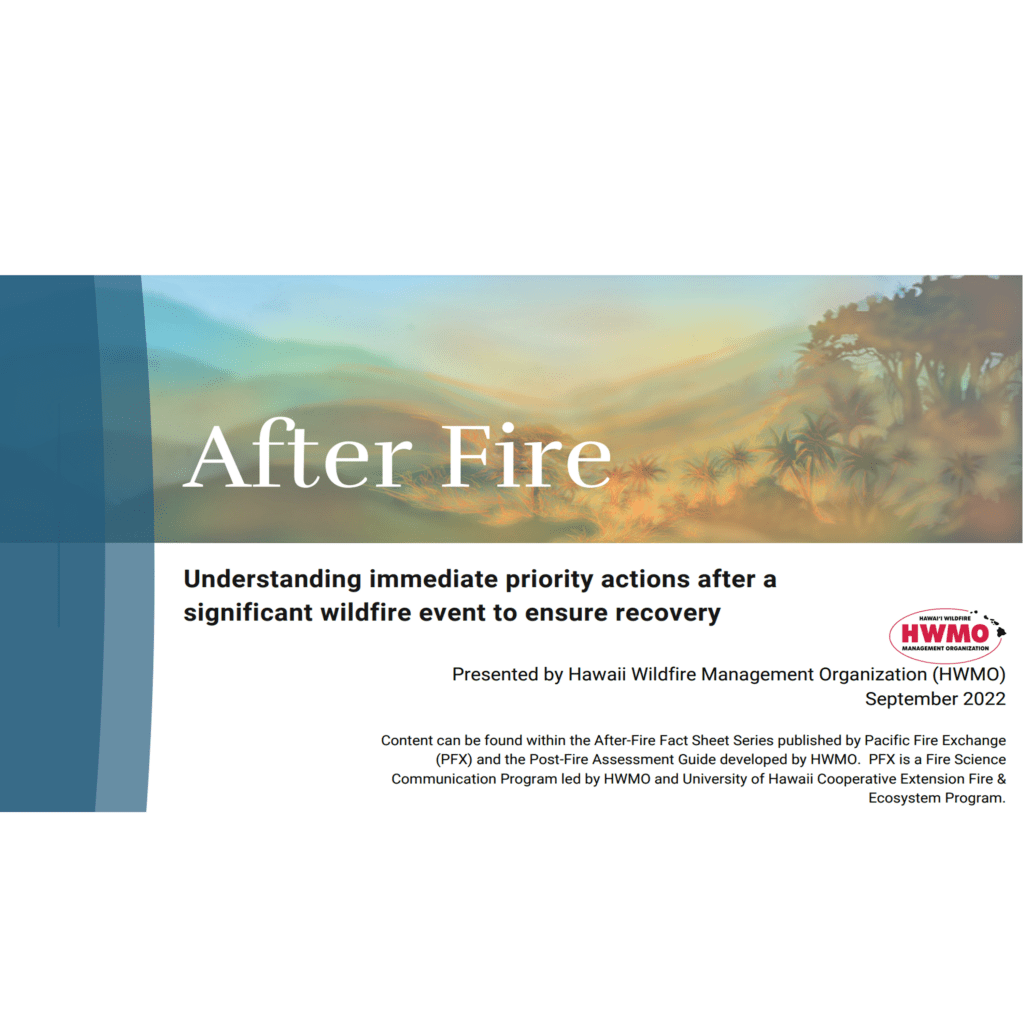
After Fire Presentation: Understanding Immediate Priority Actions After a Significant Wildfire to Ensure Recovery
After fire, there are immediate actions you can take to ensure a recovery for the people first of all, soil and water conservation

Wildfire’s Impacts to Rare and Endangered Hawaiian Plants
As wildfire, drought and invasive species increasingly impact native ecosystems, plants and animals, our remaining natural and cultural Hawaiian heritage is more threatened than ever.
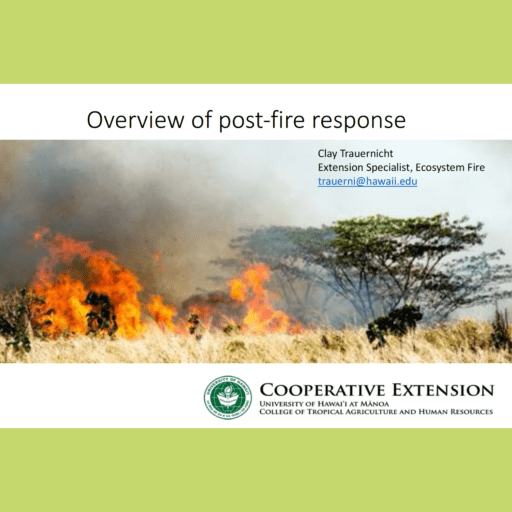
Slide Presentation: Overview of Post Fire Response
A slide presentation overview by Dr. Clay Trauernicht of best practices for assessing and mitigating after-fire impacts to the environment.

VIDEO: Wildfire Learning Exchange Field Tour (Dec 2022)
On December 13 -15, 2022 the Hawaiʻi Wildfire Management Organization and wildland fire managers from the western U.S. and Hawaiʻi’s county, state, and federal fire agencies met on Hawai‘i Island. Hawai‘i representatives were able to bring mainland partners up to speed on Hawai‘i’s fire ecology, our mitigation challenges, our collaborative programs to educate and mitigate, and our post-fire stabilization needs and recovery goals via a field tour of one of Hawai‘i’s largest fires in recent history.


